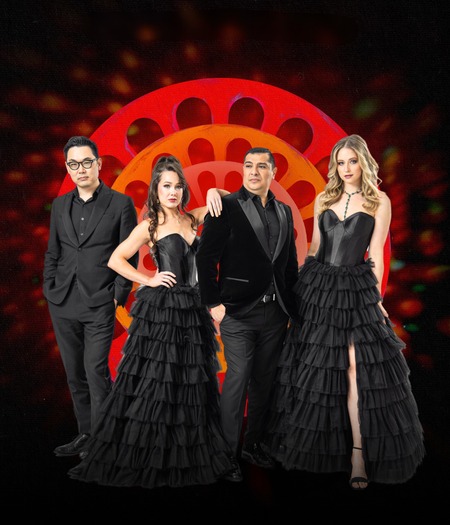
Dallas String Quartet’s (DSQ) latest release, “ROMANI: The Untold Story,” represents a profound intersection of musical artistry and historical reclamation. In this album, DSQ, led by Romani musician and composer Ion Zanca, has undertaken the formidable task of illuminating a largely obscured chapter of Romani history through an evocative musical narrative. The album not only serves as a commemoration of the Romani people’s tragic past but also stands as a testament to their indomitable spirit.
The collaboration with the London Symphony Orchestra (LSO) amplifies the gravitas of this project. Known for their unparalleled mastery in both classical and contemporary repertoires, the LSO’s contribution adds a layer of orchestral depth that complements DSQ’s innovative fusion of classical and popular music. Together, they create a sonic landscape that is as emotionally compelling as it is technically sophisticated.
The album’s structure is both thematic and chronological, presenting five distinct chapters that trace the arc of the Romani experience during and after World War II. The opening track, “Brewing Conflict,” sets the stage with a tense, foreboding atmosphere. The strings, executed with precision by DSQ and LSO, capture the anxiety of a Romani community on the cusp of devastation. This is not merely background music but a visceral narrative device, drawing the listener into the lived experiences of those on the margins of history.
“Letters of Pain,” the album’s second chapter, is perhaps the most poignant. Inspired by the real correspondence of Romani soldiers, this track intertwines soulful melodies with the Romanian national anthem, creating a juxtaposition that underscores the complex identities and divided loyalties of the time. The emotional weight of this piece is enhanced by the masterful mixing and mastering by Adam Miller, Michael Romanowski, and Eric Schilling, whose collective expertise ensures that every note resonates with clarity and power.
In “Key of Heaven,” DSQ shifts the narrative from the horrors of war to the resilience of the human spirit. The track’s ethereal quality, achieved through a delicate interplay of strings, evokes a sense of spiritual transcendence. Here, Zanca’s composition reflects the Romani people’s ability to find solace and strength in their cultural and spiritual practices, even in the face of existential threats.
The penultimate chapter, “Sangre Gitana,” is a vibrant homage to the birth of flamenco music in post-war Spain, where Romani culture found a new expression despite ongoing repression. The inclusion of celebrated Romani musicians such as Jorge Pardo and José Cortés “El Pirata” lends authenticity to this track, bridging historical memory with contemporary musical expression. This chapter not only acknowledges the Romani contribution to flamenco but also celebrates the enduring legacy of Romani culture in the global musical canon.
The album concludes with “Rhapsody for the Romani,” a track that encapsulates the triumph of the human spirit over adversity. Dedicated to Zanca’s father, this final chapter is imbued with a sense of hope and renewal. The use of archival recordings of Mircea Zanca’s music serves as a poignant reminder of the cultural continuity that has sustained the Romani people through centuries of persecution.
“ROMANI: The Untold Story” is more than an album; it is a cultural document that seeks to rectify the erasure of Romani history from mainstream narratives. By weaving together personal and collective histories, DSQ and LSO have created a work that is both artistically compelling and historically significant. The album’s release, accompanied by a philanthropic partnership with the ROMA Foundation, further underscores DSQ’s commitment to social justice and cultural preservation.
In conclusion, “ROMANI: The Untold Story” is a landmark achievement in the realm of classical crossover music. It is a powerful example of how music can serve as a vehicle for historical awareness and cultural preservation. DSQ and LSO have not only created a beautiful piece of music but have also contributed to a broader understanding of the Romani people’s place in history. This album is an essential addition to the canon of works that seek to use art as a means of historical and cultural reclamation.
